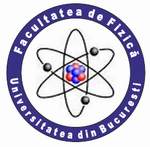| |
 |
UNIVERSITY OF BUCHAREST
FACULTY OF PHYSICS Guest
2025-10-05 22:26 |
 |
|
|
|
Conference: Bucharest University Faculty of Physics 2025 Meeting
Section: Physics and Technology of Renewable and Alternative Energy Sources
Title:
Evolution of chlorophyll content in the species Mentha piperita L. under conditions of localized copper exposure: an examination of physiological responses and environmental implications
Authors:
Bogdan Ciprian MITREA (1), Ariana Cornelia NICULESCU (2), Tom Matei IACOB (1), Cornelia DIAC (1), Bogdan Ionuț BITA (3), Cornelia NICHITA (1, 4), Marcela-Elisabeta BARBINTA-PATRASCU (3), Ioan STAMATIN (1)
*
Affiliation:
1) University of Bucharest, Faculty of Physics, ICUB, CTT 3Nano-SAE Research Center, MG-38, 405 Atomistilor Street, 077125, Magurele, Romania
2) University of Bucharest, Faculty of Physics, CTT 3Nano-SAE Research Center, MG-38, 405 Atomistilor Street, 077125, Magurele, Romania
3) Department of Electricity, Solid-State Physics and Biophysics, Faculty of Physics, University of Bucharest, 405 Atomistilor Street, P.O. Box MG-11, 077125 Magurele, Romania
4) National Institute for Chemical – Pharmaceutical Research and Development, 112 Vitan Avenue, 031299, Bucharest, Romania
E-mail
cornelia.nichita@unibuc.ro, cornelia@3nanosae.org
Keywords:
chlorophyll content, copper, eco-toxicity, Menta piperita L
Abstract:
This study examined the effects of localized copper presence in the root environment on chlorophyll accumulation in Mentha piperita L. cultivated under controlled conditions for a period of 38 days. Total chlorophyll content was monitored non-destructively using SPAD (Soil Plant Analysis Development) readings taken periodically from two plants grown in identical substrates, differing only by the presence or absence of a localised metallic source containing elemental copper. The plant subjected to copper exposure consistently exhibited lower SPAD values than the untreated reference plant, indicating a reduction in total chlorophyll content throughout the observation period. The trend was evident from early stages and persisted over time, with the exposed plant showing less variability and lower peak values in SPAD readings. These results suggest that even low-level copper enrichment in the rhizosphere may interfere with chlorophyll biosynthesis or accelerate its degradation. Recent studies support this interpretation. Zhang et al. [1] demonstrated that excess copper induces phytotoxicity in Triticum aestivum L. (wheat) by impairing chloroplast development and reducing chlorophyll content, leading to suppressed photosynthetic efficiency. Similarly, [2] reported that copper exposure in Lantana fucata L. significantly decreased chlorophyll a and b levels and altered the plant's secondary metabolite profile, indicative of oxidative stress. Moreover, [3] showed that copper toxicity disrupts ion uptake in roots, including magnesium, a central atom in chlorophyll molecules, further impairing pigment biosynthesis. This preliminary observation underscores the sensitivity of Mentha piperita L. to localised copper accumulation in the root zone and highlights the potential for sub-lethal metal exposure to affect physiological parameters critical for plant health. Further investigations involving metal quantification, ROS (Reactive oxygen species) assays, and chloroplast ultrastructure analysis are recommended to elucidate the underlying mechanisms.
References:
1) Zhang, Y., Shi, S.Q., Li, Y.P., Gao, T.P., & Yang, Y.L. (2023). Copper stress-induced phytotoxicity associated with photosynthetic characteristics and lignin metabolism in wheat seedlings. Environmental Pollution, 319, 120964. https://doi.org/10.1016/j.envpol.2022.120964
2) Pivetta, C.P., Chitolina, S.F., Dartora, N., de Pelegrin, C.M.G., dos Santos, M.V., Cassol, F., & Batista, L.S. (2023). Copper exposure leads to changes in chlorophyll content and secondary metabolite profile in Lantana fucata leaves. Functional Plant Biology, 50(7), 571–584. https://doi.org/10.1071/FP23047
3) Feil, S.B., Zuluaga, M.Y.A., Cesco, S., & Pii, Y. (2023). Copper toxicity compromises root acquisition of nitrate in the high affinity range. Frontiers in Plant Science, 13, 1034425. https://doi.org/10.3389/fpls.2022.1034425
Acknowledgement:
The authors would like to thank the European Commission and CNCS/CCCDI-UEFISCDI for funding in the frame of the collaborative international consortium WaterGreenTreat financed under the 2022 Joint call of the European Partnership 101060874 — Water4All. This work was supported by a grant of the Ministry of Research, Innovation and Digitization, CNCS/CCCDI - UEFISCDI, project number COFUND-WATER4ALL-WATER Green Treat-1, No. 59/2024, within PNCDI IV.
|
|
|
|

